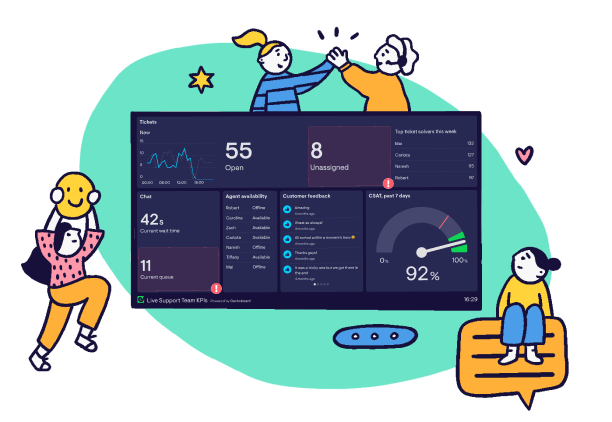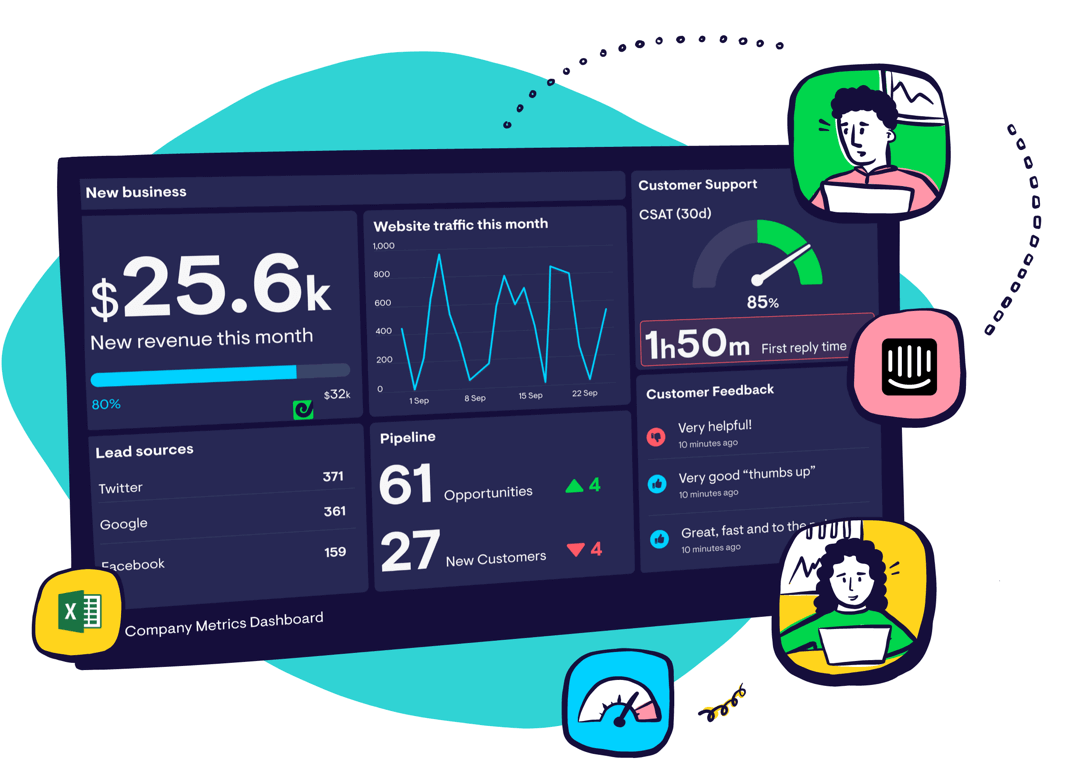First Response Time (FRT)
What is First Response Time?
First Response Time (FRT) is the time elapsed between a customer raising a ticket and an agent first responding to it. Many companies include a baseline FRT in their service level agreements (SLA), which means they must respond to customers within a specified timeframe.
Unless your support coverage is 24/7, your Average First Response Time is best measured in business hours, so your average isn’t affected by requests received on nights or weekends.
First Response Time is also sometimes called First Reply Time.
What does Average Response Time tell you?
Your Average First Response Time goes hand-in-hand with customer satisfaction (CSAT). Customers don’t like to wait in queues for getting their issues resolved. “We’ve found that timeliness and speed has a direct correlation with satisfaction”, begins Luis Hernandez, VP of Customer Success at Geckoboard. “A first response perceived as fast, can set you on the right track for a positive first impression.”
Faster response times demonstrate to customers that you’re here and ready to help them, even if that first response is a brief reply to reassure them that you’re looking into their issue. As Tim Woo, Marketing Director for Framed Data, says “Contrary to what we would assume, most customers prefer a quick but ‘ineffective’ response over a calculated, delayed answer. Immediate ‘your inquiry has been received’ responses are standard, so wow your customers with a quick, personalized first response.”
These quick responses help avoid situations where the customer either starts a new chat in another bid to get your attention, or leaves entirely. You’ve now got an opportunity to make your next reply as helpful and comprehensive as it needs to be, rather than rushing a series of replies that will only increase your Touches per Ticket.
How to calculate Average First Response Time?
Sum of First Response Times / Number of Tickets = Average First Response Time
You can calculate your average First Response Time based on a sum of all first response times divided by the number of resolved tickets. FRTs are usually quoted in minutes, hours and days.
It can be a good idea to calculate your FRT based on the median instead of the average to avoid outliers skewing the data.
Your calculation should also exclude automated responses (like those from chatbots or virtual assistants) and tickets that arrive outside of your stated business hours.
You could also filter your First Response Time by agent, team or time zone to see where improvements can be made.
Fortunately, ticketing systems like Zendesk and Help Scout can automatically calculate FRT for you.
Give your support team a boost
With Geckoboard’s real-time dashboards, everyone knows exactly what’s happening in CS right now.
Find out more
Should you track First Response Time?
Your First Response Time plays a crucial role in determining the levels of customer satisfaction. As Jamie Edwards, COO and Co-founder of Kayako, says “First reply time is more important than overall reply times because it’s an acknowledgment to the customer that their issue is being looked into.”
In most cases, if you lower the time taken to respond to queries, the higher the level of customer satisfaction. Different support channels also come with different expectations of response times. In terms of industry benchmarks, customers contacting you by email generally expect a response within 24 hours. For social, the recommended benchmark is to respond in 60 minutes or less. For phone, the generally accepted response time is three minutes.
However, speed means very little when your team lacks the tools and training they need to solve your customers’ issues. It’s important to look at the trend of average first response time to check whether it’s increasing or decreasing over a period. If you find that there’s one or more agents who are struggling to keep up, (particularly if they’re missing your SLA target) find out what might be slowing them down and suggest ways they can improve their workflow.
It’s also good practice to work with your team to find your “Goldilocks Zone”, where you set a balanced FRT target that enables your team to reply to customers in good time but not to the point where it becomes stressful and impacts on the quality of their responses. This is also where detailed and organised help documentation can help, both internal and customer-facing. Not only do they enable customers to self-serve when your coverage is lower but they also provide your agents with ready-made first responses for common issues.
